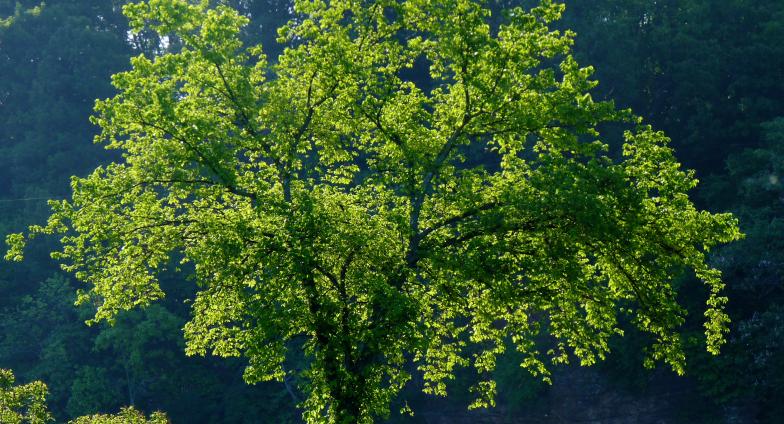The American Elm Makes A Comeback
The grand tree of North Dakota is making a comeback.
The arching branches of elms once lined our city streets like columns in a cathedral. The majestic trees provided rapid and comforting shade over our neighborhoods.
The invasion of Dutch elm disease (DED) changed everything. Discovered in Mandan in 1969, the disease has killed thousands of elms throughout our state.
What a great loss—and these losses continue as DED spreads.
There is hope. We’ve learned how to manage DED. Trained arborists can identify infected trees quickly and dispose of the wood before the pathogen spreads.
There has been amazing progress in the introduction of new elms that resist Dutch elm disease. Dutch elm disease actually came from Asia, and some Asian elms have developed genetic resistance to it. This includes the Japanese elm cultivar ‘Discovery’. It is hardy, drought tolerant, relatively short (35–40 feet) and has an upright habit.
The University of Wisconsin and Morton Arboretum (Chicago) have incorporated the DED-resistance of Asian elms into American elms and released ‘Cathedral’ and Triumph™, respectively. These trees retain the arching habit of American elms and the disease resistance of Asian elms.
Researchers estimate that less than 1 out of every 100,000 American elms is resistant to DED. In spite of those dismal odds, a few gems that resist the pathogen have been discovered.
Dutch elm disease destroyed a group of elms along the Wild Rice River near Fargo. In this grove of death, one tree stood tall and healthy. Today we call that tree Prairie Expedition® elm, with proven resistance to the disease. Look for this tree in your nursery (municipalities are buying as many as possible). Other American elms with exceptional resistance to DED are St. Croix™ and ‘Jefferson’.
No elm is immune to DED. Use varieties that resist DED and keep them growing vigorously. Vigorous trees fight disease better than weak trees. Train elm trees when young to prevent weak, narrow crotches.
For more information on growing elms in North Dakota, watch NDSU Researcher Greg Morgenson’s 2014 talk on new elm cultivars.
Written by Tom Kalb, Extension Horticulturist, North Dakota State University. The photo was made available under a Creative Commons license specified by the photographer: Dendroica cerulea. This article was originally published in the NDSU Yard & Garden Report.
Source used for this article: Gillman, J., C. Giblin, G. Johnson, E. Sagor, M. Reichenbach and G. Wyatt. 2014. Elm trees – Dutch elm disease resistant varieties. Univ. of Minnesota: Twin Cities.
